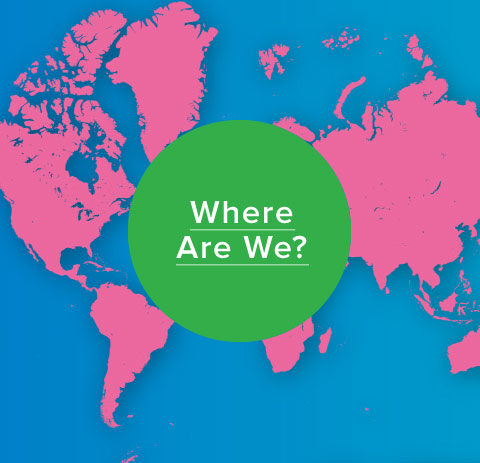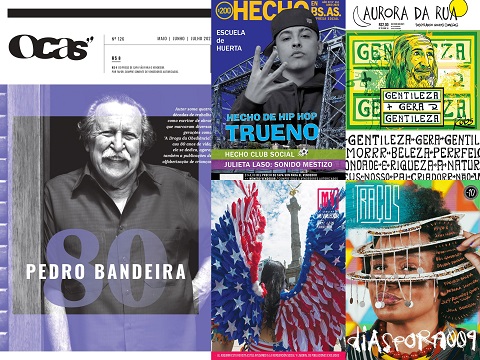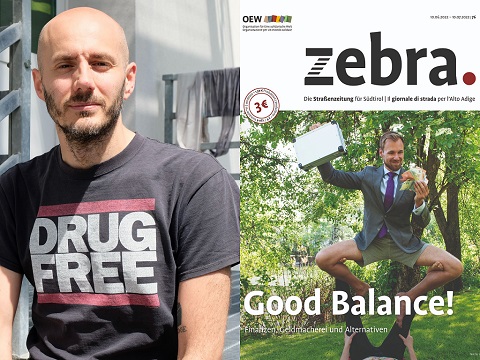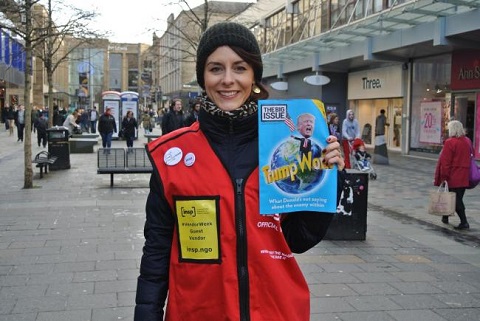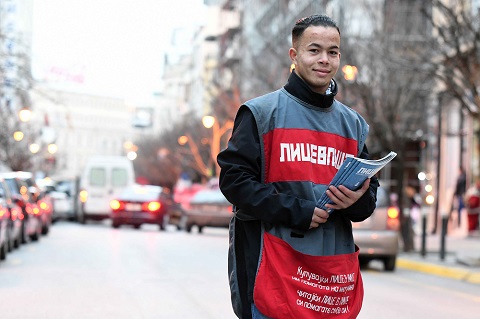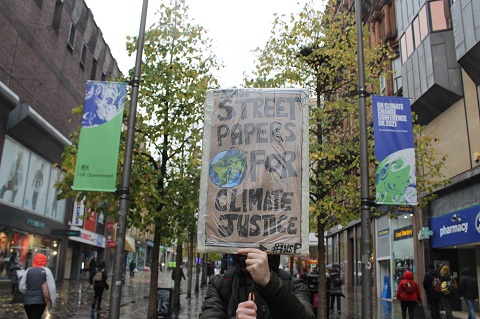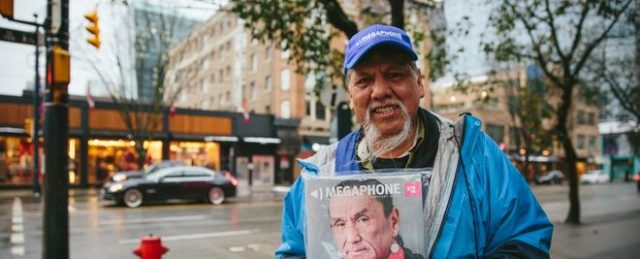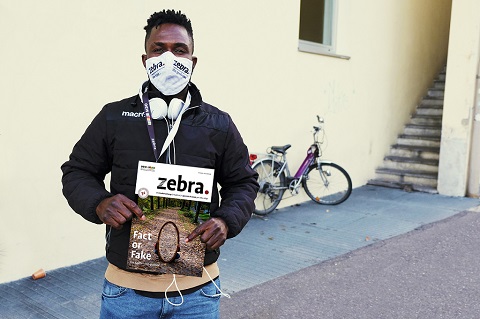INSP: You’ve mentioned that the increasing price of publishing a physical magazine is putting strain on your organisation. By how much are costs increasing, and what effect is this having?
Maja Ravanska: We’ve experienced numerous challenges during the pandemic. Beside challenges with the curfew periods, we’ve also worked to overcome demotivation with vendors, vendors dropping out of sales, challenges with partnering organisations who distribute the magazine in other cities in the country, additional funds for digitisation processes, funds for training, recruitment and training of new vendors, online sales… What we were actually doing, was far beyond the work of the street paper model, but it had it in its essence. We started planning our 10th anniversary (which is this year), and we thought that the worst was over, but we got a note from the printing house about increasing prices for printing. In March, we were notified of a third increase in price, and now we have 30 per cent higher printing costs compared to 2020.
In Macedonia, there are not many printing houses that print on machines that print papers in higher circulations, so we have very limited options. The one that works professionally, and that we’ve built a relationship with for many years now, explained to us that, with the limited market for paper and because of the war in Ukraine, the price of paper is constantly increasing. But after gathering the Professional domain data, we were able to gain more reaches that we anticipated. We still didn’t change the cover price because we think that it will first affect our vendors, then our audiences, and we are working on other options.

Have you put into place any methods to try and combat this?
People say that with every crisis, comes opportunity. The printing costs are not the only challenge. The pandemic accelerated the digitisation process, but also changed consumer habits.
There are major transformations in social habits of users worldwide, and social media has a new role in our lives and in the advertising business too. The advertising market, what we’ve taken as another income stream, doesn’t consider print media anymore. It’s all focused on digital channels, digital media and digital ways of communication. For print media, and, especially, with the street paper model, this was also crucial.
On the other hand, we have vendors with very limited digital skills. We’ve invested resources in finding new ways to reach new audiences. We’ve introduced a digital platform that aims to communicate with audiences digitally. The platform works on subscriptions, and we also have a web shop, with separate shops for vendors, introducing affiliate marketing opportunities for them. We’ve also held numerous training sessions for the team. In the beginning, this was a suitable solution, but after the initial “wow” moments, there was a significant drop in street sales and in digital sales too. Vendors started to receive feedback from the field, such as “I already bought this issue digitally, I don’t need it in print”, or, “No, thank you, I have a digital subscription”. Looking into solutions, we’ve developed a new product, “Good Cards” – greeting cards, under the brand of Lice v Lice and with the same mission.
Regarding the printed edition – instead of bimonthly, the magazine is now printed once every three months, and we reduced the number of pages. At the moment, we are looking into solutions to print on cheaper paper, and to look for a different format, or even a different product. We’ve also had to reduce staff too.

What are the reasons behind this price hike? Is it the general cost of living rise we are witnessing, or is it something impacted by specific events, such as production line disruption caused by, for example, the war in Ukraine, or something else like this?
The answers that we are receiving from printing houses are that with digitisation processes, that the pandemic accelerated, print media is more at risk than ever. Also, the war in Ukraine is causing numerous market challenges. The supply of paper is limited because of the very limited circulation of print media in the country. All of this together is a major blow to the printing industry, and for print media outlets such as ours.
Has Lice v Lice considered a cover price increase? If not, why not? If yes, would vendors be asked to pay more when buying the magazine to sell?
We’ve spoken with vendor coordinators across the country about this and it would definitely be a problem for vendors. So, we are very careful with the increase of the cover price.
The pandemic caused street papers to think about the concept and how it exists in a modern, digital age, but we saw street papers adapt in order to continue existing. Do you see production costs skyrocketing as a bigger threat? Do you think the street paper concept is facing a reckoning because of things like this?
Yes, definitely. We are witnessing that in general: printed media is having difficulties. The digital era is taking its toll. Millennials, Gen Z-ers, they don’t receive information in formats like print magazines. Even our grandmothers are on social media while drinking their morning coffee. I believe that being part of an international network is very important in this regard too – we should learn from each other and find solutions that could work for the whole street paper model.
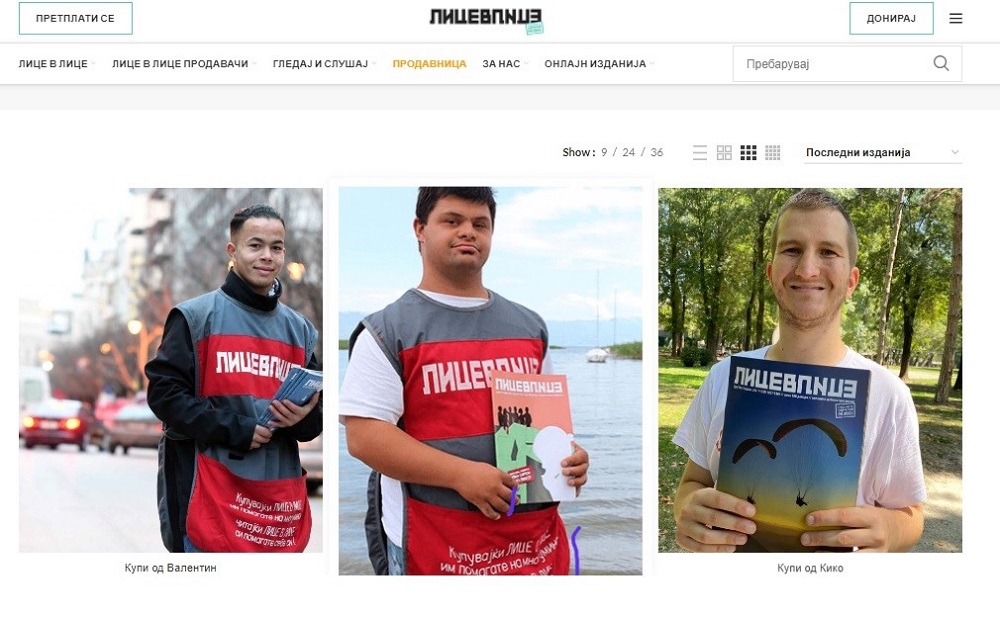
What advice do you have for other street papers that are facing similar problems?
Maybe not advice, but we have to discuss joint solutions as a network. We have to innovate in order to sustain the street paper model. We might get different solutions based on the specifics of our locales and societies, but, in my opinion, our network could lead toward a solution. We need a product that will sustain the mission, but will offer ways of communication that are in line with the needs of the audiences that are using digital channels.
What would you hope to learn from the rest of the network on this issue?
How to transform a printed product into a digital one without hurting the model in its essence. And how to communicate that transformation to societies that have huge social and economic burdens.
How does the environmental impact of physical publishing play into your discussions around printing?
We print on recyclable paper, but we know that it is not enough. We try to compensate with a lot of awareness raising content.
Is your street paper experiencing issues connected to rising publishing costs? Please let us know your perspective by emailing news@insp.ngo.
Courtesy of the International Network of Street Papers




